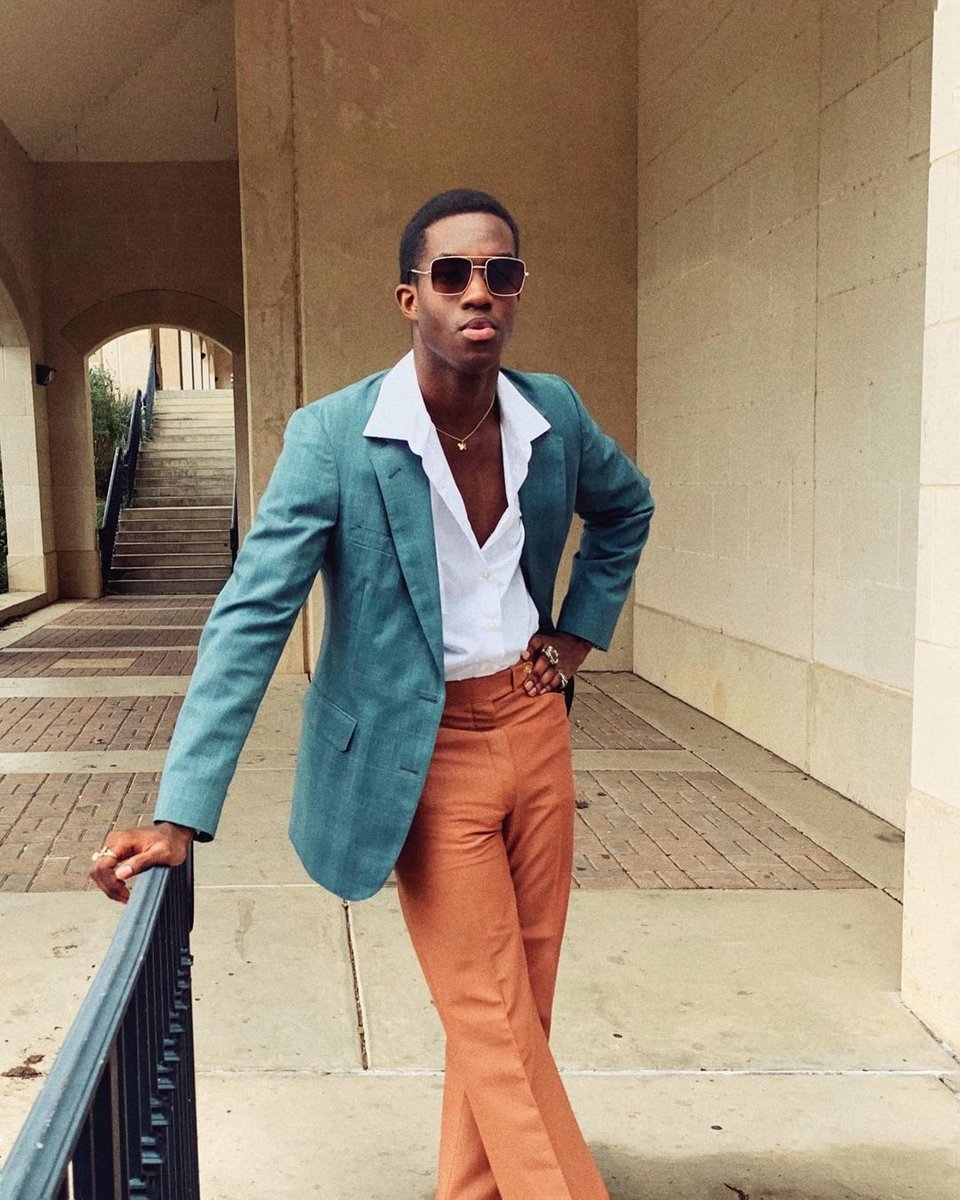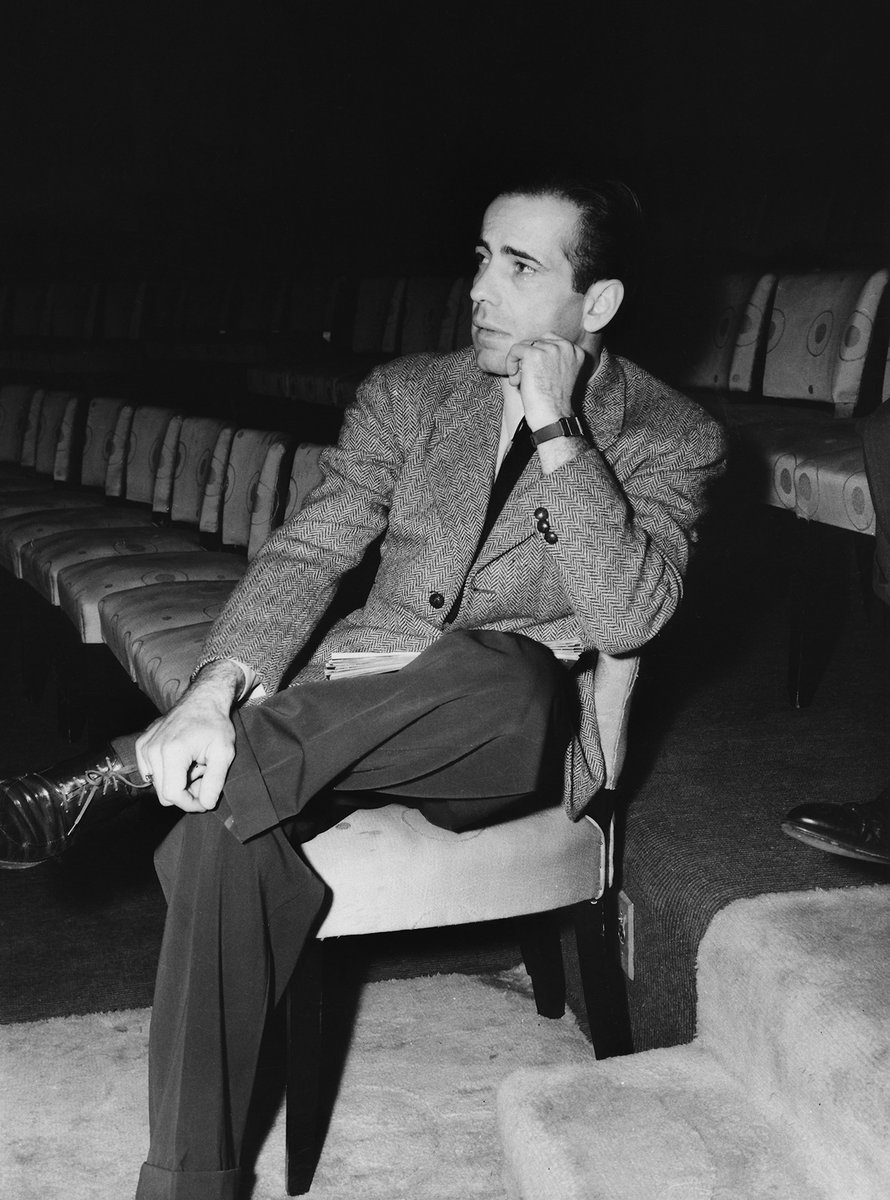I get this question a lot, so I will answer it in a thread because it will make it easier to answer for other people in the future. 🧵
https://twitter.com/GeometricCancer/status/1642676464800743428
There's a lot of info online about how to dress. Or how to build a simple, affordable wardrobe. I think these prescriptivist approaches are bad because they herd people into a bland, flavorless wardrobe that they don't actually end up loving. 

It's easy to tell how someone should dress if they need to build a wardrobe for an office that requires suits. That's because there's a clear way that you're supposed to wear such things as a result of history. 

Things are a little harder once you get into business casual. But I laid out some ideas here, if it helps:
putthison.com/how-to-do-busi…
putthison.com/how-to-do-busi…
Once you get into casualwear, it's impossible to be prescriptive. I'm a big believer that fashion is a visual language. Learning to dress well is about knowing how to speak a language.
Classic tailoring is like Received Pronunciation. Or a linga franca that everyone understands
Classic tailoring is like Received Pronunciation. Or a linga franca that everyone understands
But there are also many types of languages. Even in English, there are diff dialects and regional slang. Once you break outside of English, you may not even follow the same grammar rules.
Such aesthetics are shaped by our past and various subcultural groups.



Such aesthetics are shaped by our past and various subcultural groups.




Many brands take slices of that history and remix the aesthetic for today. Aime Leon Dore is 1990s Polo streetwear. Nigel Cabourn is British adventurer. RRL is American Southwest, workwear, and Westernwear. Savas is rock and roll. Etc etc etc. 







Successful aesthetics are about knowing how to speak well within a language. That doesn't mean you have to slavishly follow rules (think of e.e cummings). But it means knowing how to express something legible to others.
Noam Chomsky is famous for the phrase "colorless green ideas sleep furiously" as an example of a sentence that is grammatically correct but makes no sense. I think guys who approach dress as a kind of art project often make this mistake, where the outfit has no cultural meaning. 



"How do I build an affordable wardrobe" should start with "how do I want to dress?" This is going to be informed by your cultural identity, personality, lifestyle, etc. I can't answer those questions for you. See this post on how to develop taste
dieworkwear.com/2022/08/26/how…
dieworkwear.com/2022/08/26/how…
Secondly, I try to encourage people to buy things that they will LOVE WEARING, not just on day one, but in year ten. Real sustainability comes from having an emotional connection with your clothes, so you're not constantly replacing things. Read this:
dieworkwear.com/2020/08/01/on-…
dieworkwear.com/2020/08/01/on-…
So, in short, I can't tell you how to build an affordable wardrobe bc once you get out of classic, tailored clothing, it's very hard to tell someone how to dress. This is like me reading your personality; you have to figure it out yourself. You also have to find what EXCITES you.
That said, most people need to start somewhere. So years ago, I wrote this post about what I call a "springboard wardrobe." The idea is to be less prescriptive and give you a foundation that allows you to *explore* your own taste
putthison.com/the-springboar…
putthison.com/the-springboar…
Most of my service writing is at Put This On. Use the "Start Here" link at the top to explore the 12+ year writing archive. Nearly any question can be answered by Googling "[topic] putthison."
Most of my writing is also focused on classic or classic-adjacent aesthetics: tailoring, workwear, Americana, etc, and their slightly more fashion-forward counterparts (e.g., Japanese brands doing workwear). This is only a slice of all of menswear.
If you need some starting places for exploring casualwear, I listed some aesthetics here, along with the associated stores.
Developing a good wardrobe is a long process, but it can be fun and fulfilling. Take it as a journey instead of task to check off
putthison.com/tag/five-start…
Developing a good wardrobe is a long process, but it can be fun and fulfilling. Take it as a journey instead of task to check off
putthison.com/tag/five-start…
• • •
Missing some Tweet in this thread? You can try to
force a refresh

 Read on Twitter
Read on Twitter




























